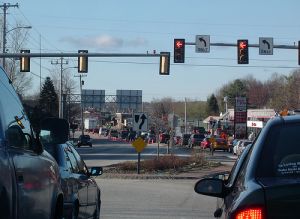[ad_1]
Sound occurs when the complex system inside our ears picks up vibrations in the air, which our brains interpret as the birds chirping, clacking keys on a computer and roaring traffic. Our days are permeated with sound – it’s inescapable. But when sound becomes bothersome, we call it noise. When noise in a particular area is constant and damaging, we refer to it as noise pollution.
 If you’re passing through an area with a good deal of noise pollution, such as a construction site, you might not mind this noise since it is a temporary disturbance that isn’t likely to cause hearing loss, stress or other health issues. But if your home – which should be a bastion of peace, quiet and calm – is in an area with frequent or pervasive noise pollution, this could be dangerous to your health. Conditions brought on by noise pollution include insomnia, hearing loss and heart health issues. You can suffer noise-induced hearing loss by being exposed to noise above 85 decibels for a prolonged period of time. Additionally, noise between 120 and 140 decibels can actually cause the ear to feel pain.
If you’re passing through an area with a good deal of noise pollution, such as a construction site, you might not mind this noise since it is a temporary disturbance that isn’t likely to cause hearing loss, stress or other health issues. But if your home – which should be a bastion of peace, quiet and calm – is in an area with frequent or pervasive noise pollution, this could be dangerous to your health. Conditions brought on by noise pollution include insomnia, hearing loss and heart health issues. You can suffer noise-induced hearing loss by being exposed to noise above 85 decibels for a prolonged period of time. Additionally, noise between 120 and 140 decibels can actually cause the ear to feel pain.
Here are some common sources of noise pollution in neighborhoods:
- Traffic sounds from a major highway, including passing traffic, vehicles that are not properly maintained and honking horns
- Airport traffic if you live near an area where planes are frequently taking off and landing above your house
- Venues where major concerts and events are held and loudspeakers are used
- Construction sites that involve heavy machinery
- Industrial sites, including factories
- Living nearby dogs with high-pitched barks
- Leaf blowers, lawn mowers, power tools and other loud at-home machinery
- Train tracks with frequent traffic
- Living near a fire or police station
Here are the approximate sound levels in decibels of various sources of noise pollution to give you an idea of the noise your ears are exposed to each day:
- When a car has a hole in its muffler: 111 db
- When a car does not have a muffler: 115 db
- A circular saw: 107 db
- Police sirens: 118 db
- Power mower: 92 db
- Vacuum cleaner: 74 db
- A train 50 feet away: 88 db
- An air conditioning unit: 60 db
- Heavy street traffic: 70 db
Protect against noise pollution
In the United States, issues of noise pollution are handled by local and state governments. If you’ve tried several things to protect your home from noise pollution to no avail, you might want to consider taking action at the local level as a first step. Most cities and states, such as many areas of Washington, have quiet hours, often between 10 p.m. and 7 a.m., during which noise pollution is not permitted.
But as a homeowner who wants a peaceful and quiet neighborhood, if you haven’t sought any solutions yet, you should know that there are several things that you can do to reduce your exposure to noise pollution from the neighborhood, as well as to protect others from noise pollution that you might produce. Here are some tips:
- Consider building a fence in your yard to block out the noise pollution. If your neighborhood has a height limit, build a berm to elevate the fence. Make sure to plant plenty of vegetation, which also does a good job of keeping sound out. You can place a fountain in your yard for some nice white noise to muffle the sound.
- In your own home, limit noise pollution by putting foam or vibration mounts under major appliances.
- Install carpet or linoleum, which do well at absorbing sound, as do drapes on the windows.
- Seal cracks and holes in your doors with foam sealant or caulk.
- Talk with your neighborhood association about the problem.
[ad_2]
Source link

